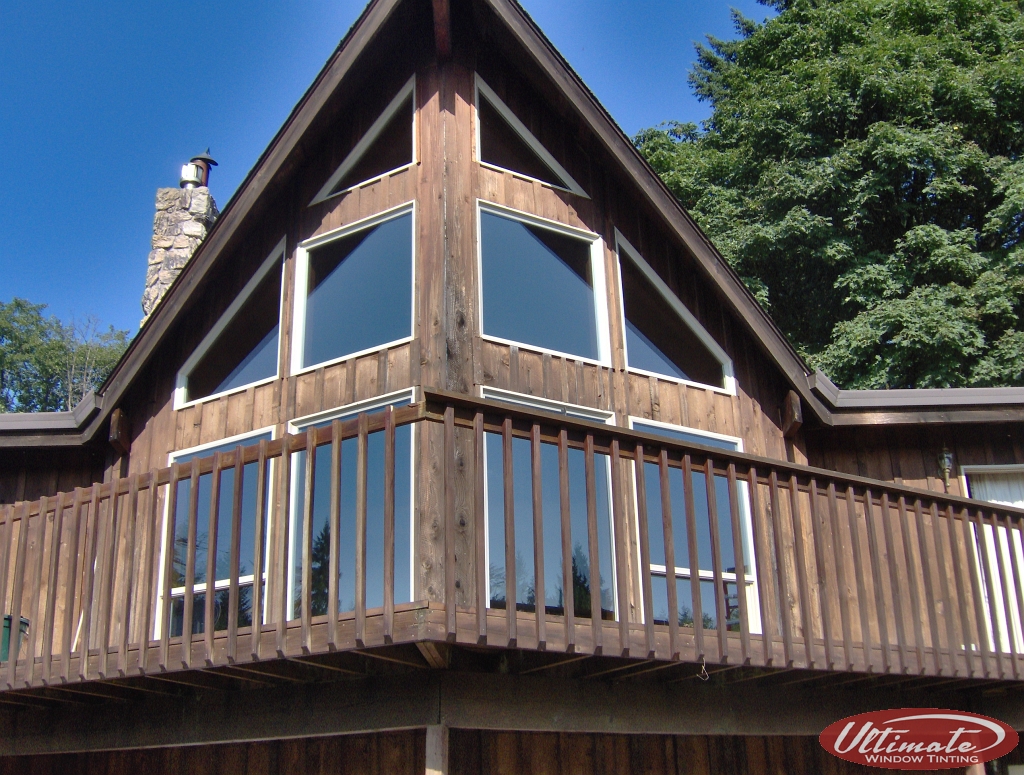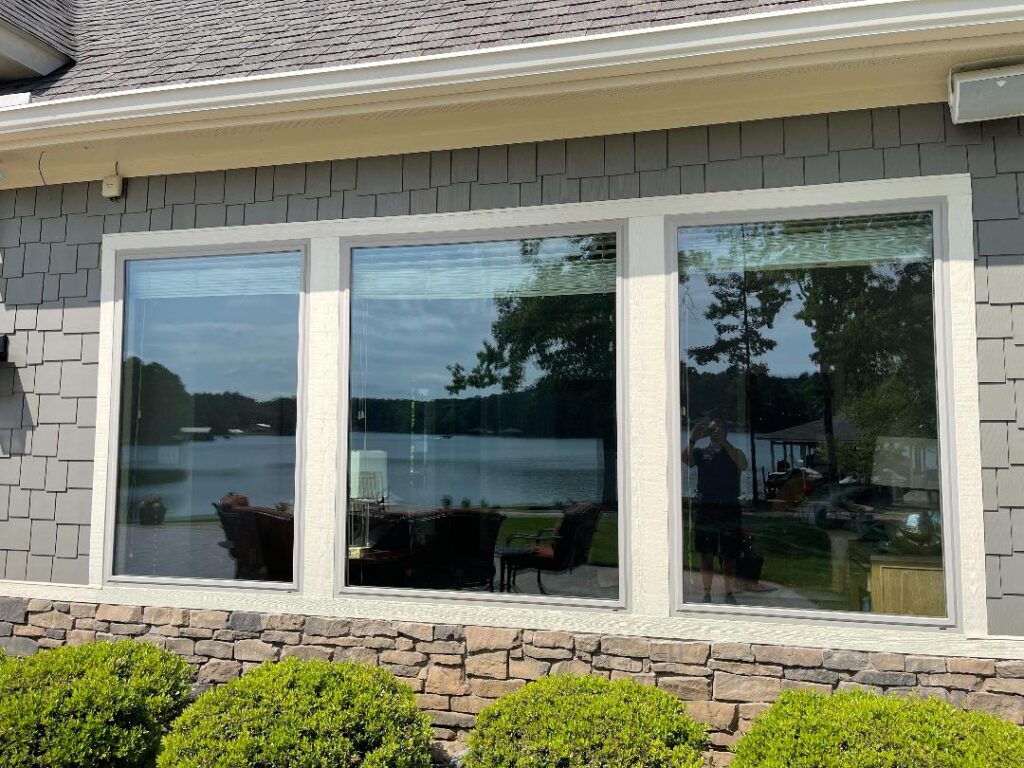Residential Window Tint: Block Harmful Rays Without Sacrificing Natural Light
Residential Window Tint: Block Harmful Rays Without Sacrificing Natural Light
Blog Article
Just How Residential Window Tinting Boosts Your Home's Energy Performance
Residential home window tinting offers an engaging service for home owners looking for to enhance energy effectiveness within their living areas. By using specialized movies to home windows, it effectively decreases warm transfer, consequently maintaining indoor temperatures and reducing the requirement for too much home heating or air conditioning.
Recognizing Window Tinting
Understanding window tinting is vital for house owners looking for to boost both convenience and power performance in their space. Residential Window Tint. Window tinting entails the application of a slim movie to the inside or outside surface area of glass windows. This movie can significantly regulate the quantity of sunlight and heat that gets in a home, hence affecting interior environment conditions
There are different kinds of window tinting films available, each with distinct buildings. Colored movies take in solar energy, while reflective movies disperse it away from the glass surface. Ceramic films provide a balance of visibility and warmth denial, making them a prominent option among homeowners. The performance of home window tinting is typically measured by its Visible Light Transmission (VLT) percentage, which shows exactly how much light can travel through the movie.
Benefits of Power Efficiency
Home window tinting not only boosts looks however also plays a considerable role in boosting energy performance within domestic rooms. By minimizing heat transfer with windows, tinted movies create a more secure indoor environment, which can cause considerable decreases in energy intake for heating & cooling. This energy performance translates into lower energy bills, offering homeowners with considerable lasting savings.

Additionally, home window tinting enhances the comfort of living rooms. By lessening glare and obstructing unsafe UV rays, colored windows develop a more pleasant setting, which can result in boosted wellness for occupants. The defense against UV rays additionally assists preserve furnishings and flooring from fading, adding to the durability of family things.
Exactly How Tinting Works
Tinting movies run with a mix of sophisticated materials and innovations designed to manage the amount of solar power entering a home. Mainly made up of polyester, these films usually integrate ceramic or metallic bits that mirror and take in warm. This double capacity allows them to significantly decrease the infiltration of ultraviolet (UV) rays and infrared radiation while permitting visible light to go through.
The effectiveness of window tinting is gauged by its solar heat gain coefficient (SHGC), which shows how much solar energy is sent through the window. Reduced SHGC worths are more suitable as they represent better heat being rejected. In addition, window tints can feature a range of tones, permitting property owners to tailor their aesthetic preferences while improving energy performance.
Furthermore, these films serve as an obstacle, stopping warmth loss throughout colder months by showing interior heat back right into the living room. This thermal insulation impact matches the air read this post here conditioning advantages obtained throughout warmer months, adding to a well balanced interior environment year-round. By taking care of solar energy effectively, domestic window tinting not only enhances comfort but also plays an important role in decreasing energy consumption and lowering utility bills.
Choosing the Right Color

There are numerous types of window films readily available, consisting of dyed, metalized, and ceramic. Ceramic films offer superb heat control without compromising exposure and are extremely sturdy, making them a popular option.
Noticeable light transmission (VLT) is another vital variable, as it indicates the amount of natural light that can go through the tinted glass. Property owners must select a color with a VLT that enhances their lights preferences while still offering adequate glow decrease.
Furthermore, evaluating the solar warm gain coefficient (SHGC) can aid establish exactly how well a tint can block heat from sunshine. A reduced SHGC shows much better warm control, eventually improving energy effectiveness.
Setup and Maintenance Tips
Proper installation and upkeep are crucial components in taking full advantage of the benefits of household home window tinting. To achieve optimal outcomes, it is advisable to employ a qualified specialist for installation. This guarantees that the tint is applied correctly, staying clear of air bubbles, wrinkles, or imbalance that might compromise efficiency. Professionals additionally utilize specialized methods and devices, which can improve the longevity and efficiency of the tint.
Following setup, upkeep is essential to prolong the life of the window movie. It is advised to wait at the very least 30 days prior to cleaning the tinted windows to allow the sticky to treat totally.
Additionally, regular evaluations are helpful. Examine for any peeling or bubbling, which could suggest inappropriate installment or put on with time - Residential Window Tint. Addressing these issues promptly can avoid additional damage and maintain energy efficiency. By adhering to these setup and maintenance suggestions, house owners can ensure their home window tinting remains to supply considerable energy cost savings and comfort for several years ahead.
Conclusion
In conclusion, domestic window tinting functions as a reliable solution for boosting power performance within homes. By minimizing warm transfer and blocking harmful UV rays, window films add to decrease power consumption and improved indoor convenience. The option of suitable tinting materials, together with correct installment and upkeep, better makes the most of these advantages. Inevitably, window informative post tinting represents a sustainable investment that not just decreases energy expenses yet likewise advertises a comfortable living setting throughout the year.
Window tinting entails the application of a thin film to the inside or outside surface of glass home windows. By lowering heat transfer with home windows, tinted films develop an extra stable indoor environment, which can lead to substantial reductions in energy intake for home heating and cooling.The efficiency of home window tinting is measured by its solar warmth gain coefficient (SHGC), which indicates just how much solar energy is transferred through the window. By handling solar power effectively, property home window tinting not just boosts comfort but also plays a crucial duty basics in reducing energy usage and decreasing energy costs.
By lowering warmth transfer and obstructing damaging UV rays, window films add to decrease power intake and boosted interior convenience.
Report this page